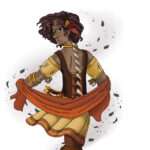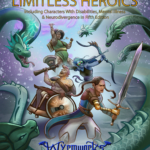Neck/Back Stiffness
Your spine or neck/back muscles are stiff, resulting in pain when moved sharply or quickly. Whenever anything jarring happens to your body (e.g., making a Strength or Dexterity saving throw, taking damage), you need to succeed on a DC 8 + (IE) × 2 Constitution saving throw. Failure results in taking one level of exhaustion until you take a short rest. This stiffness limits your head and neck movement, so you have a −(IE) penalty on all Wisdom (Perception) checks involving vision against Dexterity (Stealth).
Real-world Examples
Spinal Fusion, Arthritis, Herniated Disc, Sciatica
Assistive Options
Applied heat or cold may help, as can a 1-minute massage. A character with back or neck stiffness will likely have determined what works for them. The player and GM should decide what works effectively, and using such a method will reduce the IE by 1 for 1d6 hours. Spending (IE) hours per day (15 minutes at a time spread throughout the day) stretching the stiff muscles will reduce the IE by 1 until the next stretching session is due. A back brace gives a +2 bonus to the Constitution saving throw from jarring pain. Spending one hour swimming or bathing in warm flowing water will reduce the IE by 1 for 2d6 hours.
Magical Assistance
Applying magical healing specifically to the point of pain without restoring hp will reduce the IE by 2 for 1d4 hours.


